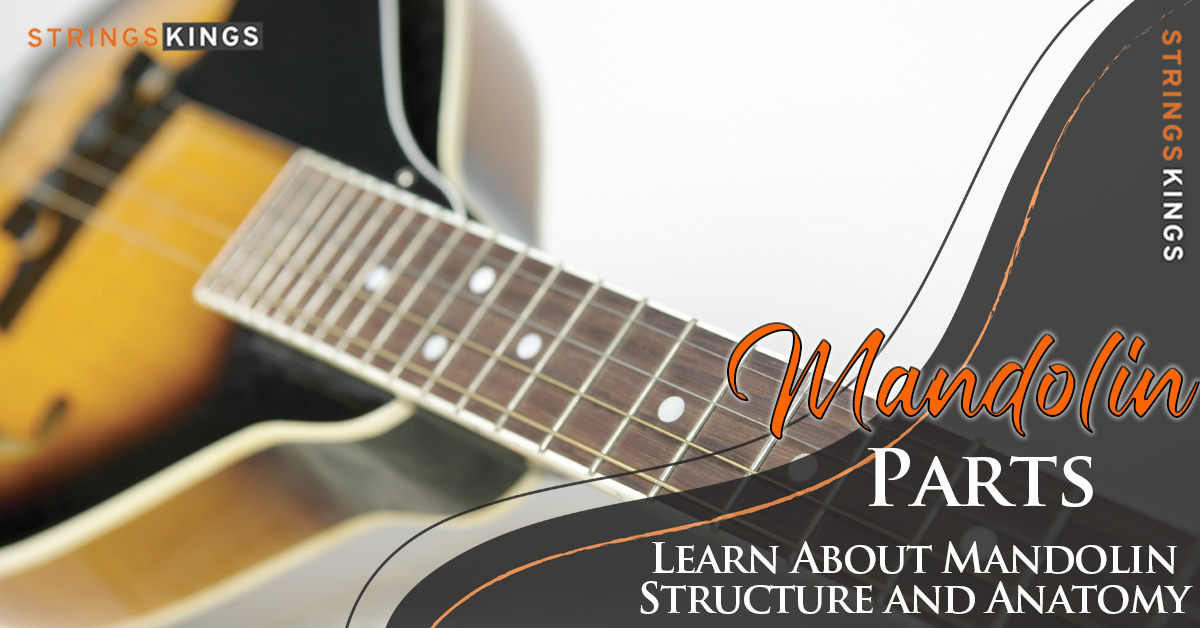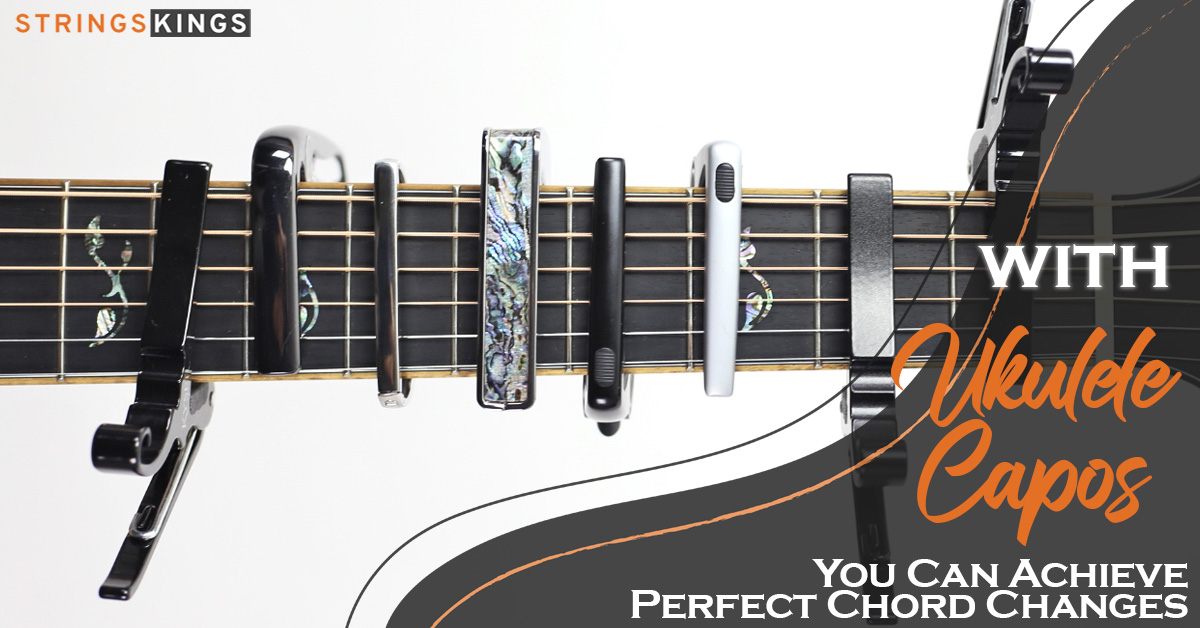Table of Contents
How to Play E Minor on Ukulele
Introduction
It is time to explain the E Minor chord on the ukulele and how to play this amazing chord. This is another easy chord and it has pretty easy variations and some that are not that easy, but worth knowing. Again, we will try to cover the basics of this chord, its scale, how to press the variations, and the root position as well.
The E minor scale is a superb method to study some new sounds in your instrument. Straight away, you’ll discover that the E minor scale sounds sadder and darker than brilliant and cheery major scales. This musical temper swing comes right down to the distinction between major and minor.
Major and minor chords evoke completely different feelings thanks to 1 small change within the scales they’re primarily based on. Merely lowering the third note of any major scale one-half step provides you that melancholy minor sound.
The E minor scale is made up of seven notes: E, F#, G, A, B, C, and D. The hashtag symbol next to the F tells you that the F is “sharp,” one fret (or a half-step) increased than the pure note F.
Like each scale on the ukulele, you may play the E minor scale in a number of completely different positions.

Play E Minor on Ukulele: How to Play It
To play the E Minor chord on ukulele, or in other words as many other musicians tend to name this chord Em or Emin, you will need to press two strings and leave two others to ring freely when performing this chord.
Firstly you will need to press the A string on the second fret with your index finger and then press the C string on the fourth fret with your ring finger. One thing that you will need to take care of when playing this chord is to make sure to arch your fingers properly, in order to avoid touching any of the open strings when playing it.
If you do touch those open strings, you will end up with the muffled sound on those and you will have an unclear sound of the chord, meaning that it will not sound like E Minor one, so you need to take care of this point.
Let’s see in-depth and in our style of explaining how you will need to play the root position and the rest of the variations.
E Minor Ukulele Chord: Root Position
So, to perform the root position for the Emin chord, you will need to do the next thing:
- Use your Index finger to press the A string on the 2nd fret.
- Use your ring finger to press the C string on the 4th fret.

This is the root position of this minor chord and you will be playing this one most of the time. Also, this is probably the easiest fingering spot for the Eminor, but it is always good to know the other variations as well because it might be easier to switch to a variation than to the root position once playing a song down the fretboard.
E minor Ukulele Chord: 1st Inversion
When playing the Em the index finger goes on the second fret of the A string after which the center finger is positioned on the third fret of the E string. Lastly, the ring finger is placed on the fourth fret of the C string.
The G string stays open so be certain your ring finger doesn’t really touch it. As long as your top finger joints stay as straight as potential you shouldn’t have difficulty with muting any tones, simply preserve them spaced as much as you possibly can.
Also, this is pretty similar to the root position, the only difference is that you are pressing one more string. Let’s see which one is making the difference:
- Use your Index finger to press the A string on the 2nd fret.
- Use your Middle finger to press the E string on the 3rd fret.
- Use your ring finger to press the C string on the 4th fret.
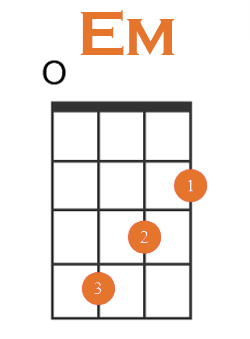
E minor Ukulele Chord: 2nd Inversion
For the second inversion, we will go down the fretboard a little bit and play a barre chord option for this variation. This is also a pretty easy one if you already mastered how to play the barre chords. Here is what you will need to do:
- Use your Index finger to press the C, E, and A string on the 7th fret.
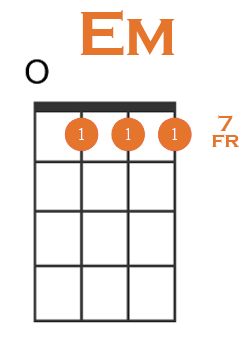
Pretty simple, right?
E minor Ukulele Chord: 3rd Inversion
And for the last inversion in this blog, we will stick to the 7th fret and modify it a little bit. You will still need to play the barre chord on the same fret to the same string, and the only different thing to do is to press the G string on the 9th fret. Here’s how:
- Use your Index finger to press the C, E, and A string on the 7th fret.
- Use your Ring finger to press the G string on the 9th fret.
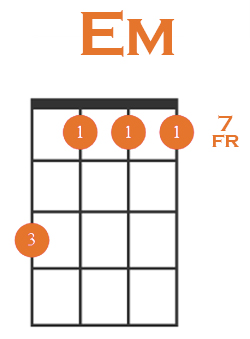
How to Play E Minor Chord on Piano
Let’s discover ways to play an Em chord on the piano. This can be a fairly straightforward chord to play, comprising solely white piano keys. How is the E minor chord shaped? You merely mix the root note, flat third, and perfect fifth of the E major scale. These notes are E, G, and B. The E minor chord can be written as E min and E- (the letter “E” followed by a minus sign).
To create the Em chord, you mix a minor third and major third. The interval or distance between E and G is one and a half tones also called a minor third. The interval or distance between G and B is 2 tones or a major third.
Notes E – G – B.

Famous Songs that use the E Minor Ukulele Chord
“About a Girl“ is a tune by the American band Nirvana, written by vocalist Kurt Cobain. It’s the third tune on their debut album, Bleach, released in June 1989.
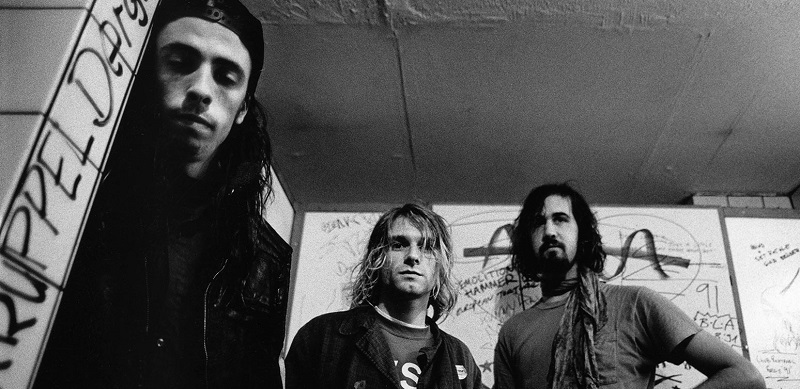
A live, acoustic variation, recorded throughout Nirvana’s MTV Unplugged show in November 1993, was launched as a single in October 1994, to advertise the album, MTV Unplugged in New York. It was the primary single launched since Cobain’s demise in April 1994, reaching number one on Billboard’s Modern Rock Tracks chart and number 22 on Billboard’s Hot 100 Airplay chart.

Conclusion
Well, as per usual, we are finishing the post after the famous song that has the chord we are explaining and teaching. We believe that by the end of reading this article, you will be ready to play at least the root position and one other variation of this chord.
If not, you just need to dedicate at least half an hour to practice this chord and master it. The best way to do this is to find a song that you like that has this chord and play along with it. You can also try the song we provided because you will learn one classic song from a legendary rock band.
The passion to learn and teach the ukulele is found here and if you are on this website, probably you are passionate as well. We hope that we delivered what you expected to read about this topic and make sure to browse our website for more chords and interesting reads. Until next time!




